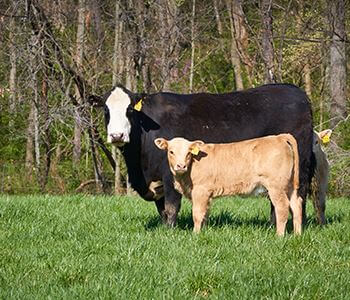Deworming: Should You Do It?
May 14, 2020

Deworming is a topic that is somewhat overlooked in the cow/calf segment. We may run Safeguard through or use a pour on when we work cattle but beyond that, deworming is generally not a huge concern, so I would like to take a little time to go over different Deworming strategies and the benefits it provides.
95% of all worms live in the grass and the lust pastures we use every summer. It doesn’t matter the type of winter we endure, worms survive by burrowing down into the soil and when the weather gets warm, they emerge and make their way up the grass to find a host to lay their eggs in. In the gut worm lifecycle, the worms are ingested by the cow and burrow into the gastric glands which causes gut damage and affects the immune system. Worm eggs are then excreted by cattle leaving worm larvae in the grass, starting the process all over again.
Dr. Lawrence of Iowa State ran a study back in 2007 that showed just by deworming cattle at the appropriate times could add up to $201.00 to the operation, by increasing weaning weights on calves, better reproduction in cows and better overall herd health by increasing nutrient absorption.

There are a variety of ways to deworm cattle depending on your operation weather it be pour-on, injectable, feed, or a drench. Merck Animal Health recommends using a Safeguard product and here is why:
Safeguard can be administered either with a drench or feed product but, either way the product goes straight to the gut where the worms thrive. It provides a lethal dose at day one then leaves the system by day three. This way, if there does happen to be a worm that survives the lethal dose, it does not have much time to develop a resistance, because the active ingredients have already left the body. On the other hand, pour-on or injectables provide a lethal dose at day 3 because it must make its way through hair and skin before getting into the bloodstream and finally making its way into the gut. It then stays in the system for a longer period allowing any survivors more time to develop a resistance against the active ingredient.
No matter which product you choose to use, one of the most important things to remember is to administer the product correctly. Keep in mind there are very few 1200-pound cows in the country anymore and underdosage can lead to more resistance because there are not enough active ingredients to kill parasites. Merck recommends deworming when cattle are going to grass, then again 6-8 weeks later, and then finally again in the fall if they were not dewormed the previous fall. If you were able to deworm in the fall, 6-8 weeks after turning out is ideal (but does cause extra labor, because of this Merck provides blocks and other feed products), and then again in the fall is ideal in order to kill parasites properly. A simple way to remember this is Mother’s Day, 4th of July, or bull turn out, and then when you go to stalks.
If you have any questions or would like more information please don’t hesitate to contact us, we would be happy to help!

McKenzie Smith
Purina Animal Nutrition
605-448-2285
MAChambers@landolakes.com